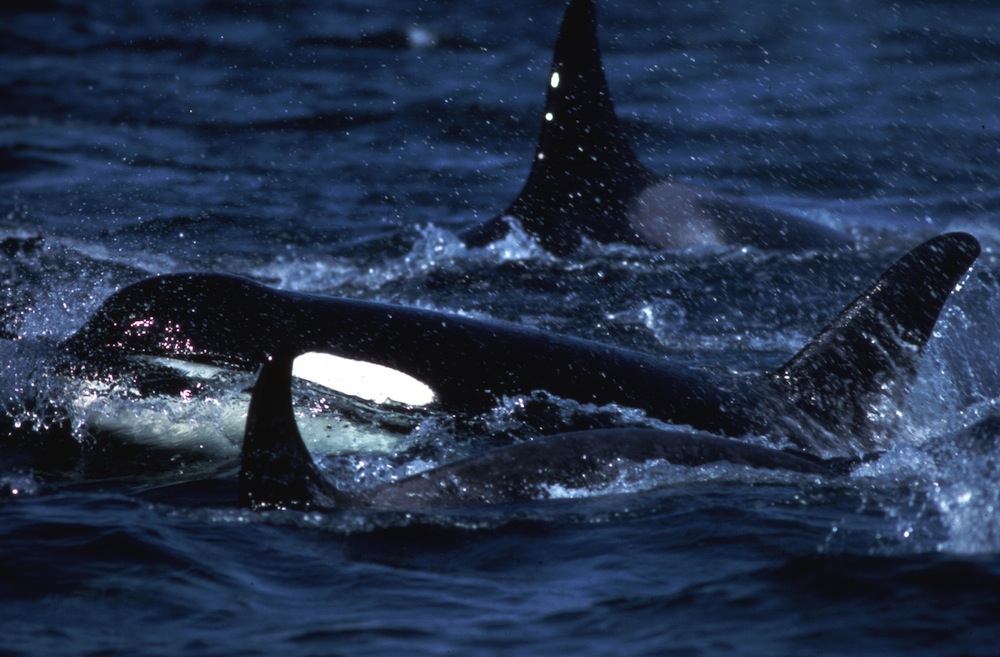Killer Whale Populations Took Deep Dive During Ice Age

Killer whale populations around the world may have suffered steep declines during the last Ice Age, when food for these top predators may have been scarce, a new study finds.
Researchers at Durham University, in Durham, England, sequenced the whole genomes of killer whale communities around the world, and found that global populations of these whales experienced a significant disruption and subsequent decline during the most recent Ice Age, when glaciers covered Antarctica, large swaths of Europe, North America and South America, and parts of Asia.
The scientists studied DNA sequences from 616 samples, and discovered a loss of genetic diversity in killer whale populations worldwide approximately 40,000 years ago, during the Ice Age in the Pleistocene Epoch. Genetic diversity can act as an indicator of a population's health, with greater diversity typically signifying a larger population size, according to the researchers. [See Photos of Russia's Beautiful Killer Whales]
Icy Earth
There have been at least five major ice ages documented in the 4.5 billion years since Earth formed, although scientists say there were likely many more ice age events before humans populated the planet approximately 2.3 million years ago. The last Ice Age occurred during the Pleistocene Epoch, which is typically thought to have spanned from 11,700 years ago to 1.8 million years ago.
"Killer whales have a broad worldwide distribution, rivaling that of humans," study lead author Rus Hoelzel, a professor in the School of Biological and Biomedical Sciences at Durham University, said in a statement. "At the same time, they have very low levels of genetic diversity. Our data suggest that a severe reduction in population size during the coldest period of the last Ice Age could help explain this low diversity, and that it could have been an event affecting populations around the world."
But, finding an explanation for the unfortunate trend was a challenge, the researchers said.
Get the world’s most fascinating discoveries delivered straight to your inbox.
"[A] global event is hard to explain, because regional modern-day killer whale populations seem quite isolated from each other," Hoelzel said. "What could have affected multiple populations from around the world all at the same time?"
A question of currents
Hoelzel and his colleagues studied upwelling systems around the world, which are wind-driven currents that churn cooler and typically nutrient-rich water toward the ocean surface, replacing warmer surface water with far fewer nutrients.
Most of the major upwelling systems around the world — including the California current off North America; the Humboldt current off South America; and the Canary current off the coast of North Africa — were either disrupted or suffered a collapse during the last Ice Age. These glacial disturbances may have depleted the food available to killer whales in these regions, causing an overall drop in the number of killer whales.
Yet, the researchers found a key exception: A killer whale population off the coast of South Africa that still exhibits high genetic diversity.
This resilience could be due to the population's geographic location, since the Bengeula upwelling system, which carries nutrient-rich, cold water to the oceans off South Africa, remained stable even during the most recent Ice Age, according to the researchers.
"These whales live in an environment that has been highly productive and stable for at least the last million years, while some data suggest that ocean productivity may have been reduced during the last glacial period elsewhere in the world," Hoelzel said.
Examining the genetic diversity of other marine top predators, such as sharks, during the Pleistocene Epoch could provide other clues about the impact of the last Ice Age on the marine environment, he added.
"It would also support concerns about the potential for climate disruptions to impact ocean ecosystems in [the] future," Hoelzel said.
The detailed findings of the study were published online Tuesday (Feb. 4) in the journal Molecular Biology and Evolution.
Follow Denise Chow on Twitter @denisechow. Follow Live Science @livescience, Facebook & Google+. Original article on Live Science.

Denise Chow was the assistant managing editor at Live Science before moving to NBC News as a science reporter, where she focuses on general science and climate change. Before joining the Live Science team in 2013, she spent two years as a staff writer for Space.com, writing about rocket launches and covering NASA's final three space shuttle missions. A Canadian transplant, Denise has a bachelor's degree from the University of Toronto, and a master's degree in journalism from New York University.
